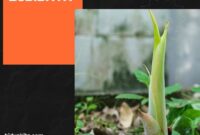Dalam era pertumbuhan populasi yang cepat dan permintaan pangan yang terus meningkat, perikanan budidaya telah menjadi salah satu solusi penting untuk menjaga pasokan ikan yang berkelanjutan. Dalam konteks ini, perikanan budidaya, atau biasa disebut juga sebagai akuakultur, mengacu pada proses pembibitan, pemeliharaan, dan penangkapan ikan secara komersial dalam lingkungan yang terkontrol.
Melalui perikanan budidaya, para petani ikan berperan penting dalam memastikan pasokan ikan yang cukup bagi masyarakat. Dengan melakukan pembiakan dan pemeliharaan ikan secara terencana, mereka dapat mengontrol pertumbuhan dan perilaku ikan, yang pada gilirannya mempengaruhi tingkat produksi. Selain itu, teknik budidaya modern juga memungkinkan para petani ikan untuk meminimalkan dampak lingkungan negatif, seperti pencemaran air dan penurunan keanekaragaman hayati.
Meskipun tujuan utama perikanan budidaya adalah untuk memperoleh pasokan ikan yang berlimpah, proses ini juga memberikan manfaat yang lebih luas. Masyarakat yang tertarik dengan dunia perikanan dapat terlibat dalam kegiatan ini sebagai hobi atau sebagai usaha sampingan yang menyenangkan.
Dengan melibatkan diri dalam perikanan budidaya, seseorang dapat belajar tentang siklus hidup ikan, teknik pemeliharaan yang baik, dan bagaimana membuat habitat yang optimal untuk pertumbuhan ikan. Hal ini tidak hanya memberikan kepuasan secara pribadi, tetapi juga berpotensi menghasilkan pendapatan tambahan bagi individu atau keluarga.
Dalam perikanan budidaya, berbagai spesies ikan dapat dipelihara, mulai dari ikan air tawar hingga ikan air laut. Misalnya, ikan nila dan ikan Lele populer dalam budidaya air tawar, sementara ikan salmon dan ikan tuna menjadi pilihan umum dalam budidaya air laut. Pemilihan jenis ikan yang tepat tergantung pada faktor seperti lingkungan dan tingkat keahlian petani ikan.
Proses perikanan budidaya tidak hanya memerlukan pengetahuan tentang kehidupan ikan, tetapi juga membutuhkan pemahaman tentang aspek bisnis. Sebagai petani ikan, seseorang harus mampu mengelola pasokan pakan ikan, mengendalikan penyakit ikan, serta menjaga kebersihan lingkungan pembudidayaan. Pemahaman ini penting untuk menjaga kesehatan dan produktivitas ikan yang dibudidayakan.
Perkembangan teknologi juga telah berkontribusi pada kemajuan perikanan budidaya. Penerapan sistem akuaponik, misalnya, memungkinkan pertumbuhan ikan dan tanaman secara bersamaan, dengan saling memberikan nutrisi yang diperlukan. Dalam sistem ini, air yang mengandung limbah ikan digunakan sebagai pupuk organik untuk tanaman, sementara tanaman membersihkan air sebelum dikembalikan ke kolam ikan.
Dalam globalisasi dan perubahan iklim yang semakin meningkat, perikanan budidaya menjadi semakin penting untuk menjaga keberlanjutan pasokan pangan. Dengan kombinasi pengetahuan, keberanian, dan semangat menjaga lingkungan, perikanan budidaya menjadi salah satu aktivitas yang menyenangkan dan bermanfaat bagi individu dan masyarakat secara keseluruhan.
Oleh karena itu, jika Anda mencari cara yang menyenangkan untuk berkontribusi pada pemenuhan kebutuhan pangan global, mempelajari dan terlibat dalam perikanan budidaya adalah pilihan yang tepat!
Daftar Isi
- 1 Aquaculture
- 1.1 What is Aquaculture?
- 1.2 How is Aquaculture practiced?
- 1.3 1. Pond Culture:
- 1.4 2. Cage Culture:
- 1.5 3. Recirculating Aquaculture Systems (RAS):
- 1.6 What are the benefits of Aquaculture?
- 1.7 1. Increased Food Production:
- 1.8 2. Economic Development:
- 1.9 3. Environmental Sustainability:
- 1.10 What are the challenges of Aquaculture?
- 1.11 1. Disease Control:
- 1.12 2. Environmental Impact:
- 1.13 What is the purpose of aquaculture?
- 2 Frequently Asked Questions (FAQ)
- 3 Conclusion
Aquaculture
Aquaculture, also known as fish farming, is the practice of cultivating aquatic organisms such as fish, mollusks, crustaceans, and aquatic plants for various purposes. It involves rearing fish or other aquatic species in controlled environments such as tanks, ponds, or cages, and providing them with proper nutrition, water quality, and disease control measures to ensure healthy growth and maximize production.
What is Aquaculture?
Aquaculture refers to the breeding, rearing, and harvesting of plants and animals in all types of water environments, including freshwater, seawater, and brackish water. It is an important sector of the global food industry and contributes significantly to meeting the increasing demand for seafood.
How is Aquaculture practiced?
Aquaculture can be practiced using various methods depending on the species being cultivated and the specific goals of the operation. Some common methods include:
1. Pond Culture:
Pond culture involves the cultivation of aquatic organisms in artificial ponds or impoundments. This method is widely used for raising freshwater species such as tilapia, catfish, carp, and shrimp. The ponds are carefully managed to maintain optimal water quality and provide sufficient space and food for the organisms to grow.
2. Cage Culture:
Cage culture involves the use of floating cages or net pens in natural water bodies such as lakes, rivers, or the open sea. The cages confine the fish while allowing a continuous flow of water for oxygenation and waste removal. This method is commonly used for farming salmon, trout, and sea bass.
3. Recirculating Aquaculture Systems (RAS):
RAS involves the use of tanks or closed-loop systems where water is recirculated and treated to maintain optimal conditions for fish or shrimp. It is a highly efficient method that minimizes water usage and allows control over water quality parameters such as temperature, oxygen levels, and waste removal. RAS is commonly used for raising high-value species such as salmon, barramundi, and sturgeon.
What are the benefits of Aquaculture?
Aquaculture offers several benefits compared to traditional fishing and capture fisheries:
1. Increased Food Production:
Aquaculture plays a crucial role in meeting the growing demand for seafood due to the declining wild fish stocks. It provides a consistent and reliable supply of fish and other aquatic products to the market, helping to ensure food security.
2. Economic Development:
Aquaculture creates employment opportunities and contributes to the economic development of coastal communities and regions with suitable water resources. It generates income through the sale of fish, shellfish, and other aquaculture products, thereby supporting livelihoods and improving local economies.
3. Environmental Sustainability:
Aquaculture can be practiced in an environmentally sustainable manner by implementing proper management practices. It can alleviate pressure on wild fish stocks, reduce overfishing, and minimize habitat destruction associated with traditional fishing methods. Additionally, aquaculture operations can utilize effluents and nutrient-rich wastewater to grow crops, contributing to a circular economy and reducing environmental pollution.
What are the challenges of Aquaculture?
While aquaculture offers numerous benefits, it also faces several challenges:
1. Disease Control:
Aquaculture operations are prone to disease outbreaks, which can lead to significant economic losses and environmental impact. Maintaining optimal water quality, practicing good biosecurity measures, and monitoring and treating diseases are crucial for the health and sustainability of aquaculture systems.
2. Environmental Impact:
Poorly managed aquaculture operations can have adverse effects on the environment. Excessive nutrient loads, improper waste management, and the escape of farmed organisms can degrade water quality, harm wild populations, and disrupt local ecosystems. It is essential to implement sustainable practices and minimize the environmental footprint of aquaculture.
What is the purpose of aquaculture?
The primary purpose of aquaculture is to meet the increasing global demand for seafood and provide a sustainable source of high-quality protein. Aquaculture helps to supplement declining wild fish stocks and reduce pressure on the oceans. It also contributes to food security, economic development, and environmental sustainability by offering a controlled and efficient method of aquatic productio
Frequently Asked Questions (FAQ)
Q1: How long does it take for fish to grow in aquaculture?
A1: The growth rate of fish in aquaculture can vary depending on factors such as species, temperature, water quality, and feeding practices. Generally, it takes several months to a few years for fish to reach marketable size. For example, Nile tilapia can grow to market size (around 500 grams) in about 6-9 months, while Atlantic salmon can take 2-3 years.
Q2: Is aquaculture environmentally friendly?
A2: Aquaculture can be environmentally friendly if managed properly. Sustainable aquaculture practices include minimizing the use of antibiotics, practicing responsible feeding to minimize waste, adopting good water management practices, and reducing the escape of farmed organisms. Effective monitoring and regulation are also essential to ensure environmental sustainability in aquaculture operations.
Conclusion
In conclusion, aquaculture is a vital industry that contributes to food security, economic development, and environmental sustainability. It offers a controlled and efficient method of producing seafood and other aquatic products to meet the increasing global demand. While aquaculture faces challenges such as disease control and environmental impact, proper management practices can mitigate these issues. As consumers, we can support sustainable aquaculture by making informed choices and demanding responsibly produced seafood. By doing so, we can contribute to a more sustainable and secure future for our food supply and the health of our oceans.



